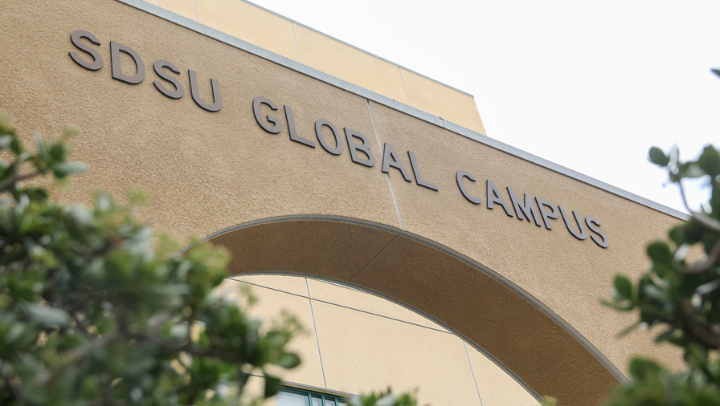SDSU Human Patient Simulation Center Receives $1 Million Naming Gift from Sharp HealthCare
Media open house and live demonstration to take place Wed., Sept. 12 at 11 a.m

It looks like a real hospital emergency room: gurneys, heart monitors, crash carts, even patients. But for nursing students at San Diego State University this is their classroom.
The Human Patient Simulation Center (HPSC) in SDSU’s School of Nursing houses seven fully-automated patient simulators where students can practice their clinical decision making skills and learn how to interact with patients, families and doctors. Not only can the simulators mimic more than 90 different medical conditions from heart attacks to drug overdoses, but through audio technology, professors are able to play the role of the patient and interact with the student nurses during the simulations.
Now, thanks to a $1 million naming gift from Sharp HealthCare, generations of future nursing students will also be able to benefit from this high-tech facility.
“Our state’s nursing shortage is well known, and our support of the Human Patient Simulation Center will help give nursing students the best education possible in the most efficient setting,” said Dan Gross, Executive Vice President of Hospital Operations of Sharp HealthCare. “This Center will enhance what already is an excellent nursing program at SDSU.”
The Sharp HealthCare Human Patient Simulation Center is the largest simulation center in Southern California. The center has four adult simulators, one pediatric simulator and two infant simulators. The pediatric model is the size of an average six or seven year-old child, one baby model is the size of a six to nine month-old and the second baby model is of a newborn infant, born to the birthing mannequin.
Each simulator cost the school approximately $50,000 and the warranty on each can run as high as $4,500 per year.
“Often schools or hospitals invest in the equipment, but then the high fidelity mannequins end up collecting dust because there are no funds to pay for training or development of a simulation coordinator and faculty or to fund outcomes studies,” said Catherine Todero, director of the School of Nursing. “This gift will allow SDSU to set an aggressive simulation agenda and to take full advantage of our new center.”
The Sharp HealthCare Human Patient Simulation Center is also equipped with video equipment that records the students during the simulations. The video is then used as a teaching tool for professors to instruct students on mistakes they made and recognize work done correctly.
“A center like this allows us to provide our nursing students with a top-notch education that will benefit the entire region,” said Marilyn Newhoff, dean of SDSU’s College of Health and Human Services, in which the School of Nursing is housed.
Consistently ranked as the number-one integrated health care system in Southern California by Modern Healthcare, Sharp HealthCare is San Diego’s most comprehensive health care delivery system, recognized for clinical excellence in cardiac, women’s, cancer, orthopedic, multi-organ transplantation, rehabilitation and behavioral health services. The Sharp system includes four acute care hospitals, three specialty hospitals, three affiliated medical groups and a health plan. To learn more about Sharp, visit www.sharp.com.
SDSU’s School of Nursing was established as a baccalaureate program in 1953, with a master’s program being added in 1982. The school is part of SDSU’s College of Health and Human Services which offers professional education in the health and human service disciplines of public health, gerontology, social work and speech, language and hearing sciences in addition to nursing.



